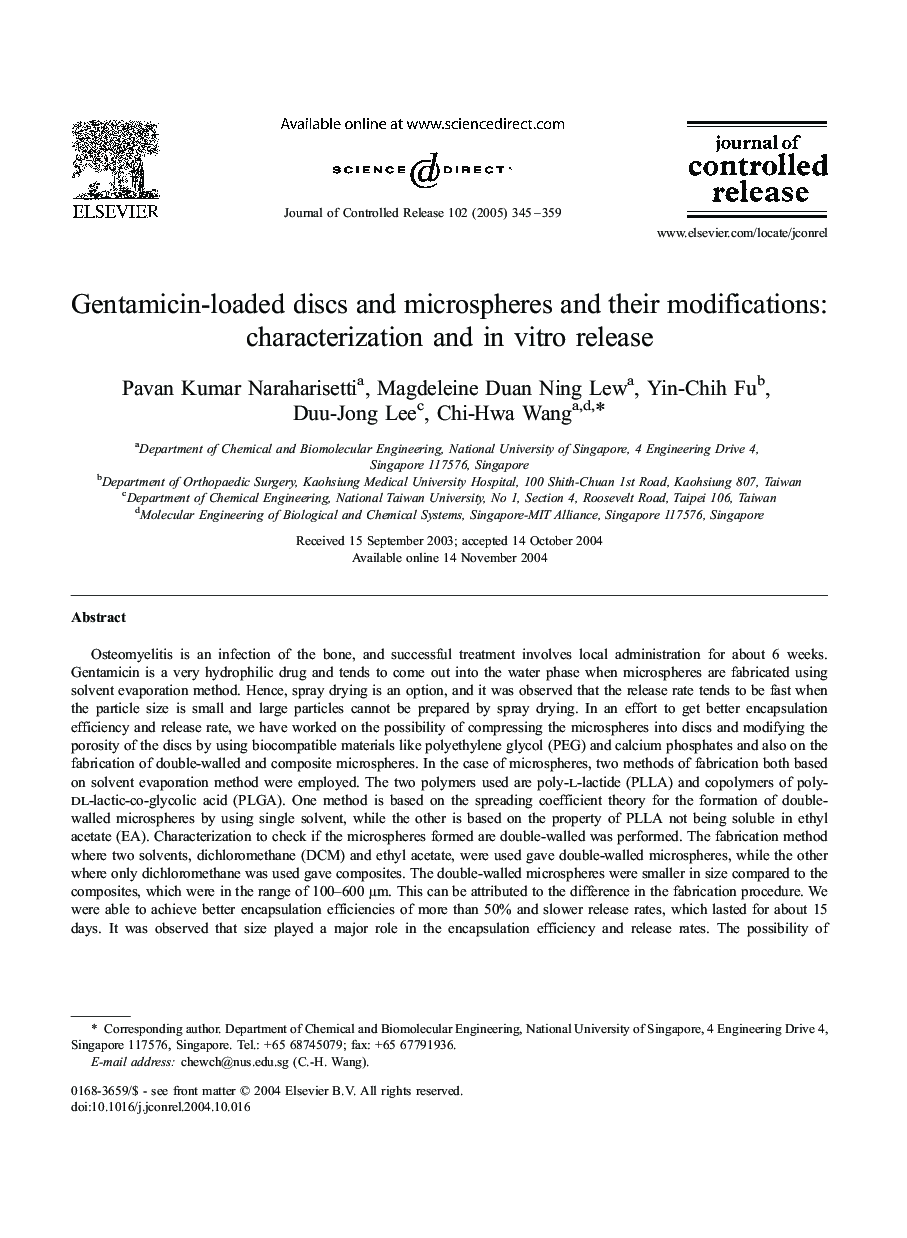| کد مقاله | کد نشریه | سال انتشار | مقاله انگلیسی | نسخه تمام متن |
|---|---|---|---|---|
| 10613607 | 986899 | 2005 | 15 صفحه PDF | دانلود رایگان |
عنوان انگلیسی مقاله ISI
Gentamicin-loaded discs and microspheres and their modifications: characterization and in vitro release
دانلود مقاله + سفارش ترجمه
دانلود مقاله ISI انگلیسی
رایگان برای ایرانیان
کلمات کلیدی
موضوعات مرتبط
مهندسی و علوم پایه
مهندسی مواد
بیومتریال
پیش نمایش صفحه اول مقاله

چکیده انگلیسی
Osteomyelitis is an infection of the bone, and successful treatment involves local administration for about 6 weeks. Gentamicin is a very hydrophilic drug and tends to come out into the water phase when microspheres are fabricated using solvent evaporation method. Hence, spray drying is an option, and it was observed that the release rate tends to be fast when the particle size is small and large particles cannot be prepared by spray drying. In an effort to get better encapsulation efficiency and release rate, we have worked on the possibility of compressing the microspheres into discs and modifying the porosity of the discs by using biocompatible materials like polyethylene glycol (PEG) and calcium phosphates and also on the fabrication of double-walled and composite microspheres. In the case of microspheres, two methods of fabrication both based on solvent evaporation method were employed. The two polymers used are poly-l-lactide (PLLA) and copolymers of poly-dl-lactic-co-glycolic acid (PLGA). One method is based on the spreading coefficient theory for the formation of double-walled microspheres by using single solvent, while the other is based on the property of PLLA not being soluble in ethyl acetate (EA). Characterization to check if the microspheres formed are double-walled was performed. The fabrication method where two solvents, dichloromethane (DCM) and ethyl acetate, were used gave double-walled microspheres, while the other where only dichloromethane was used gave composites. The double-walled microspheres were smaller in size compared to the composites, which were in the range of 100-600 μm. This can be attributed to the difference in the fabrication procedure. We were able to achieve better encapsulation efficiencies of more than 50% and slower release rates, which lasted for about 15 days. It was observed that size played a major role in the encapsulation efficiency and release rates. The possibility of achieving better results by studying the effect of concentration of polymer in solvent and the effect of using different polymers was investigated.
ناشر
Database: Elsevier - ScienceDirect (ساینس دایرکت)
Journal: Journal of Controlled Release - Volume 102, Issue 2, 2 February 2005, Pages 345-359
Journal: Journal of Controlled Release - Volume 102, Issue 2, 2 February 2005, Pages 345-359
نویسندگان
Pavan Kumar Naraharisetti, Magdeleine Duan Ning Lew, Yin-Chih Fu, Duu-Jong Lee, Chi-Hwa Wang,